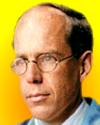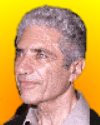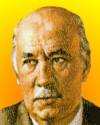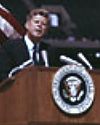 | TODAY IN SCIENCE HISTORY NEWSLETTER - 25 MAY |
| Feature for Today |
 On 25 May 1861, Hans Goldschmidt was born, the German chemist who invented the use of Thermite for welding (patented 1895). On 25 May 1861, Hans Goldschmidt was born, the German chemist who invented the use of Thermite for welding (patented 1895).In Mining Magazine (1905), a digest of two articles describes the process of what Goldschmidt called Aluminothermics. |
| Book of the Day | |
| |
| Quotations for Today | |
 | "Firm support has been found for the assertion that electricity occurs at thousands of points where we at most conjectured that it was present. Innumerable electrical particles oscillate in every flame and light source. We can in fact assume that every heat source is filled with electrons which will continue to oscillate ceaselessly and indefinitely. All these electrons leave their impression on the emitted rays. We can hope that experimental study of the radiation phenomena, which are exposed to various influences, but in particular to the effect of magnetism, will provide us with useful data concerning a new field, that of atomistic astronomy, as Lodge called it, populated with atoms and electrons instead of planets and worlds." |
 | "I heard Professor Cannon lecture last night, going partly on your account. His subject was a physiological substitute for war—which is international sports and I suppose motorcycle races—to encourage the secretion of the adrenal glands!" |
 | "The effect of a concept-driven revolution is to explain old things in new ways. The effect of a tool-driven revolution is to discover new things that have to be explained." |
| QUIZ | |
| Before you look at today's web page, see if you can answer some of these questions about the events that happened on this day. Some of the names are very familiar. Others will likely stump you. Tickle your curiosity with these questions, then check your answers on today's web page. | |
| Births | |
 |  Jack Steinberger, a German-born American physicist, born on 25 May 1921, along with Leon M. Lederman and Melvin Schwartz, was awarded the Nobel Prize for Physics in 1988 for their joint discoveries concerning a certain nuclear particle. Jack Steinberger, a German-born American physicist, born on 25 May 1921, along with Leon M. Lederman and Melvin Schwartz, was awarded the Nobel Prize for Physics in 1988 for their joint discoveries concerning a certain nuclear particle. Can you name this particle? Can you name this particle? |
 |  On 25 May 1889, an American pioneer in aircraft design was born in Russia. He is best known for his successful development of the helicopter. On 25 May 1889, an American pioneer in aircraft design was born in Russia. He is best known for his successful development of the helicopter. Can you name this man? Can you name this man? |
| Deaths | |
 |  Hans Goldschmidt (1861-1923) was a German chemist who invented a process sometimes called the Goldschmidt reduction process (1905). This operation has been employed to produce such metals as chromium, manganese, and cobalt from oxide ores. It is also used for welding, whereby iron oxides react with another common metal releasing both intense heat and molten iron. Hans Goldschmidt (1861-1923) was a German chemist who invented a process sometimes called the Goldschmidt reduction process (1905). This operation has been employed to produce such metals as chromium, manganese, and cobalt from oxide ores. It is also used for welding, whereby iron oxides react with another common metal releasing both intense heat and molten iron.  What is the common metal used in the reduction process of the oxides of other metals? What is the common metal used in the reduction process of the oxides of other metals? |
 |  Sir Frank Dyson (1868-1939) was a British astronomer who in 1919 organized observations of stars near the Sun, which provided evidence supporting the earlier prediction of another scientist of the bending of light in a gravitational field. Sir Frank Dyson (1868-1939) was a British astronomer who in 1919 organized observations of stars near the Sun, which provided evidence supporting the earlier prediction of another scientist of the bending of light in a gravitational field. What scientist predicted this bending of light? What scientist predicted this bending of light? |
| Events | |
 |  On 25 May 1961, U.S. President John F. Kennedy formally announced that "I believe that this nation should commit itself to achieving the goal, before this decade is out..." On 25 May 1961, U.S. President John F. Kennedy formally announced that "I believe that this nation should commit itself to achieving the goal, before this decade is out..." Can you complete his sentence? Can you complete his sentence? |
| Answers |
When you have your answers ready to all the questions above, you'll find all the information to check them, and more, on the May 25 web page of Today in Science History. Or, try this link first for just the brief answers. Fast answers for the previous newsletter for May 24: Daniel Gabriel Fahrenheit; scientist and physicist; Nicolaus Copernicus; electricity; Brooklyn Bridge; the decade including the year 1960; Westminster Bridge. |
| Feedback |
 If you enjoy this newsletter, the website, or wish to offer encouragement or ideas, please send feedback by using your mail reader Reply button. If you enjoy this newsletter, the website, or wish to offer encouragement or ideas, please send feedback by using your mail reader Reply button. |
--
If you do not want to receive any more newsletters, this link
To update your preferences and to unsubscribe visit this link
If you do not want to receive any more newsletters, this link
To update your preferences and to unsubscribe visit this link
! !



Δεν υπάρχουν σχόλια:
Δημοσίευση σχολίου